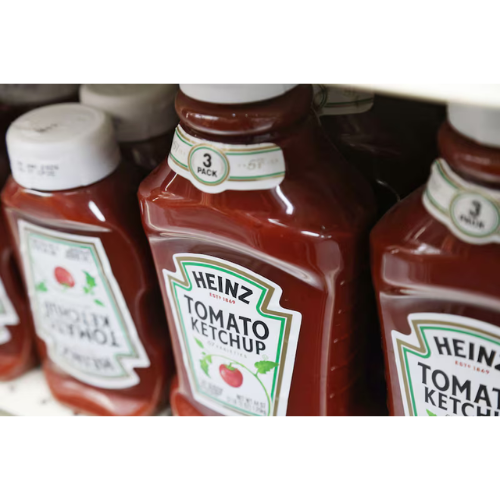Kraft Heinz Split: The End of a Landmark Merger and the Dawn of Two Independent Entities
The global food and beverage industry has just witnessed a watershed moment: Kraft Heinz announced its decision to split into two separate companies, officially ending one of the most emblematic mergers in the sector’s history. This move, long speculated by analysts and investors, reflects deeper structural challenges in the packaged food industry and signals how legacy giants are adapting to a rapidly evolving consumer landscape.
From a technical, financial, and strategic standpoint, the Kraft Heinz split raises critical questions: why now, what does it mean for shareholders, and how will the two entities position themselves in an increasingly fragmented market?
A Merger That Redefined the Industry
When Kraft Foods Group and Heinz merged in 2015 in a deal orchestrated by 3G Capital and Berkshire Hathaway, it was hailed as a game-changing move. The merger created the world’s fifth-largest food and beverage company, with a portfolio that included iconic brands like Heinz ketchup, Kraft Mac & Cheese, Philadelphia cream cheese, Oscar Mayer, and Capri Sun.
At its peak, Kraft Heinz was valued at over $100 billion, seen as a powerful combination of scale, efficiency, and global reach. The thesis behind the merger was straightforward: consolidate operations, aggressively cut costs, and unlock synergies across supply chains and distribution networks.
But the strategy faltered. The cost-cutting model, once a hallmark of 3G Capital’s playbook, proved unsustainable in a market where innovation, health-conscious consumption, and brand agility were increasingly crucial. By 2019, Kraft Heinz faced a $15 billion write-down on its flagship brands, mounting debt, and stagnating sales.
The split is the culmination of a decade-long struggle to reconcile scale with relevance.
Why the Split Now?
The decision to divide Kraft Heinz into two independent entities reflects a recognition that different business lines require different strategic approaches. Analysts expect the structure to be:
- North America Consumer Brands Co.
- Focused on iconic packaged food staples in the U.S. and Canada.
- Brands: Kraft Mac & Cheese, Philadelphia, Oscar Mayer, Planters.
- Strategy: defend market share in mature, slow-growth categories.
- Global Taste & Condiments Co.
- Built around Heinz, with international exposure.
- Brands: Heinz ketchup, sauces, condiments, frozen meals.
- Strategy: pursue growth in emerging markets, foodservice, and global distribution.
By separating, each entity can tailor its capital allocation, R&D priorities, and marketing investments without being constrained by the other’s strategic needs.
From a technical standpoint, the split is designed to:
- Unlock shareholder value by allowing investors to choose exposure to either a stable cash-generating business or a growth-oriented global platform.
- Streamline operations and capital structures, giving each company clearer metrics for valuation.
Financial and Market Implications

For shareholders, the Kraft Heinz split will likely involve a tax-free spin-off, where existing investors receive shares in both companies. This approach mirrors moves by other consumer goods giants such as Mondelez (which spun off from Kraft in 2012) and Kellogg’s, which recently divided into separate cereal and snack businesses.
Key financial implications include:
Debt Restructuring: Each company will carry a portion of Kraft Heinz’s current debt load. Allocation will be critical to maintaining investment-grade ratings.
Dividend Policies: Stable cash flow from the North America Consumer Brands Co. may support higher dividends, while Global Taste & Condiments Co. may reinvest profits into expansion.
Valuation Uplift: Analysts expect a potential multiple expansion, as markets often reward “pure-play” companies.
Industry Context: Adapting to Structural Change
The split should also be understood within the broader context of the packaged food industry’s transformation. Several macro trends have reshaped consumer behavior and corporate strategy:
- Health and Wellness: Consumers are shifting toward fresher, organic, and plant-based options. Traditional processed food companies face demand erosion.
- Premiumization: Shoppers are willing to pay more for premium sauces, condiments, and artisanal offerings, a trend Heinz has successfully leveraged.
- Emerging Markets: Growth is increasingly concentrated outside North America and Europe, particularly in Asia and Latin America.
- Digital Distribution: Direct-to-consumer platforms, e-commerce, and personalized marketing disrupt traditional retail channels.
Kraft Heinz struggled to keep pace with these shifts under a unified structure. Splitting allows each company to pursue focused innovation pipelines and partnerships aligned with its core strengths.
The Kraft Heinz split into two independent companies marks the end of a bold but flawed merger that struggled to adapt to changing consumer dynamics.
Looking ahead, the split provides both opportunity and risk: one company will cater to stable, mature markets, while the other chases global growth and premiumization. For emerging markets, the Global Taste & Condiments entity could play a bigger role as it seeks expansion in the southern hemisphere.
From a technical perspective, this is an inflection point in how legacy food conglomerates confront disruption. The Kraft Heinz story will be studied as a case where synergy dreams gave way to the reality of focused specialization.
